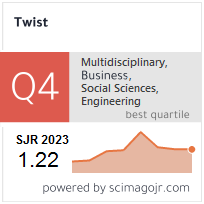Nutritional Analysis of Paragis (Eleusine indica) Steamed Rice Cake as a Potential Filipino Delicacy
Keywords:
Native delicacy, Nutritional analysis , Paragis, Steamed Rice CakeAbstract
This study investigates the nutritional analysis, consumer acceptability, and storage capacity of Paragis (Eleusine indica) steamed rice cake, presenting it as an innovative Filipino delicacy. Paragis, commonly known as goose grass, is traditionally valued for its medicinal properties, but this research explores its potential as a functional food ingredient. Sensory evaluation of four formulations identified Treatment 3 (T3) as the most acceptable, achieving the highest weighted mean score of 4.93. In terms of storage capacity, T3 maintained its sensory quality best under cold storage, with a consistent mean score of 4.5 across all attributes. However, sensory scores declined to a mean of 2.5 under normal storage conditions, indicating a significant reduction in quality.
Nutritional analysis of the most acceptable sample (T3) revealed the following composition: 38.69% moisture, 11.89% fat, 4.02% protein, 1.20% ash, and 308 mg/100 g sodium. Standard analytical methods were employed, including air oven drying (CHE-TM-004) for moisture, Soxhlet extraction (CHE-TM-003) for fat, Kjeldahl method (CHE-TM-002) for protein, gravimetric methods (CHE-TM-001) for ash, and atomic absorption spectroscopy (CHE-TM-014) for mineral analysis, as per the AOAC International (20th Edition, 2016).
These findings demonstrate the feasibility of incorporating Paragis into steamed rice cakes, offering a nutritious and innovative product for the market. The study serves as a foundation for potential commercialization, promoting the utilization of indigenous plants in functional food development.
Downloads
Downloads
Published
Issue
Section
License
Copyright (c) 2025 TWIST

This work is licensed under a Creative Commons Attribution-NonCommercial-ShareAlike 4.0 International License.











